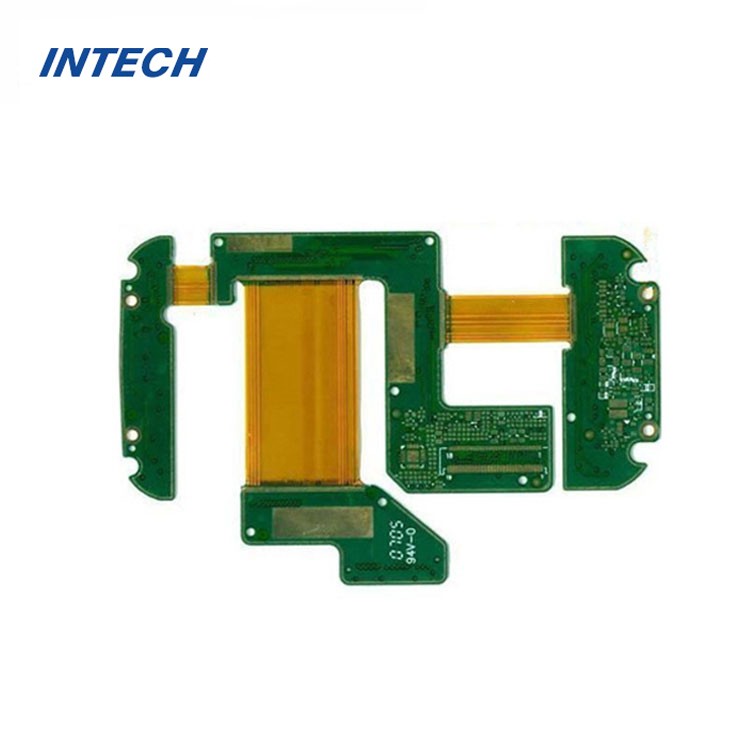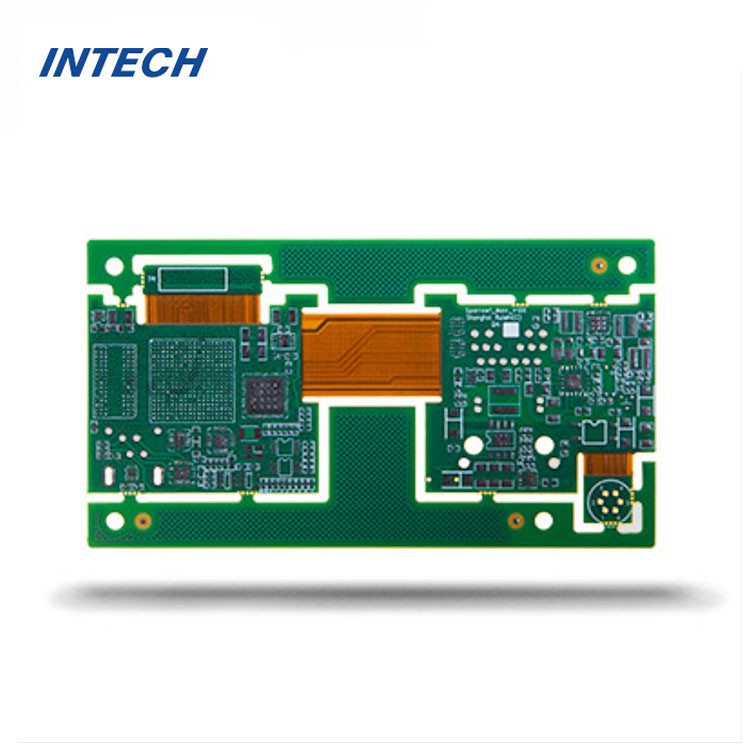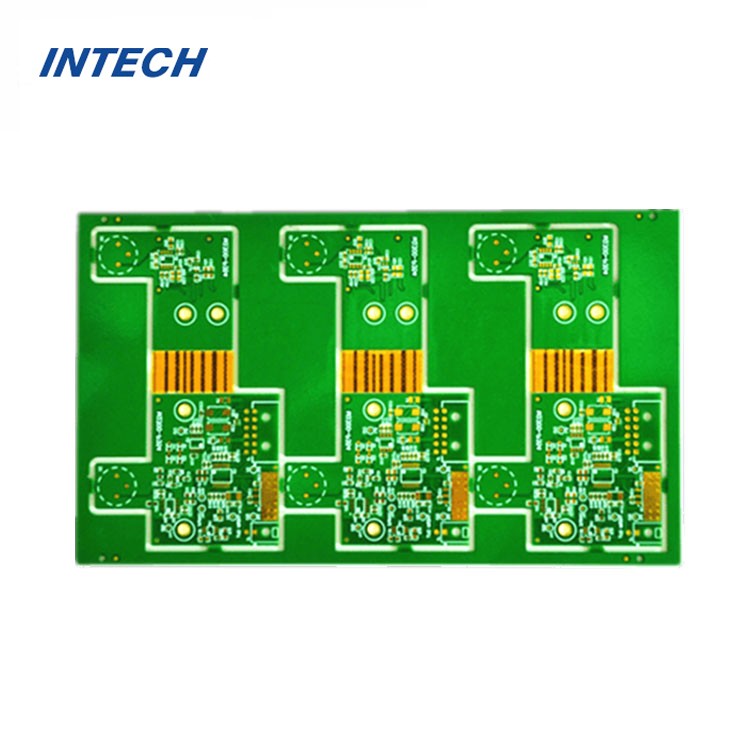Why Is Flex-Rigid PCB Design Essential for Modern Electronics?
Date:2025-02-20 11:43:07
Flex-rigid PCB design has become a cornerstone in meeting these challenges, offering solutions that traditional PCBs cannot. Whether it's in smartphones, wearables, or medical devices, flex-rigid printed circuit boards (PCBs) provide a perfect blend of flexibility and durability, making them an essential component in modern electronics. In this article, we'll explore why flex-rigid PCB design is crucial for the future of electronics and how flex-rigid PCB manufacturing is paving the way for innovative product development.
1. The Basics of Flex-Rigid PCB Design
A flex-rigid PCB is a hybrid circuit board that combines the benefits of both flexible PCBs and rigid PCBs. These boards consist of both flexible and rigid sections, allowing designers to use the best features of each. The rigid PCB sections provide structural support and durability, while the flexible PCB sections offer the freedom to bend and fold, making them ideal for compact, space-constrained devices.This combination allows manufacturers to create complex, multi-layered designs that would be difficult or impossible with standard rigid or flexible boards alone. Flex-rigid PCB design enables a high degree of integration, creating more space-efficient and lightweight devices without sacrificing performance or reliability.
2. Space Optimization and Miniaturization
As electronic devices get smaller and more powerful, flex-rigid PCB design plays a crucial role in optimizing space and reducing the size of components. Flex-rigid printed circuit boards can be designed to fit into tight or irregular spaces, allowing for more compact product designs. This is particularly important in industries like consumer electronics, medical devices, and automotive applications, where size constraints are critical.The ability to bend and fold the PCB without compromising its integrity opens up a world of possibilities for product designers. In devices like smartphones, wearables, and other portable electronics, flex-rigid PCBs allow manufacturers to fit complex circuitry into smaller packages, contributing to the miniaturization of modern electronics.

3. Enhanced Durability and Reliability
One of the main reasons flex-rigid PCB design is essential in modern electronics is its ability to improve durability. Traditional PCBs can sometimes be vulnerable to stress or vibrations, especially in dynamic environments. In contrast, flex-rigid PCBs are highly resistant to shock, vibration, and bending stress, which makes them ideal for applications in demanding industries such as automotive, aerospace, and industrial equipment.The flexibility of the flex-rigid printed circuit board ensures that the board can handle mechanical stresses without cracking or breaking, which significantly improves the lifespan and reliability of the product. For industries like aerospace, where devices experience significant vibrations, flex-rigid PCB manufacturing allows for a more durable solution that can withstand the rigors of extreme environments.
4. Improved Signal Integrity
In high-performance electronics, maintaining signal integrity is essential. Flex-rigid PCB design can help achieve this by reducing the distance signals must travel across the circuit. The flexibility of these PCBs allows for better routing and positioning of the conductive traces, minimizing the risk of signal degradation that often occurs in traditional designs. Additionally, flex-rigid PCBs reduce the number of interconnects required, which helps improve overall signal quality and reduces the likelihood of signal loss or interference.In sensitive electronics like medical devices, where signal integrity is crucial for accurate data transmission, flex-rigid PCB design ensures that the components are optimized for minimal interference and maximum efficiency.
5. Cost-Effective Manufacturing
Although the initial cost of flex-rigid PCB manufacturing can be higher than traditional PCB production due to the more complex processes involved, it is important to consider the long-term benefits. The use of flex-rigid PCBs in product designs can significantly reduce assembly time and costs, as fewer connectors and cables are needed. The integration of both flexible and rigid sections into a single board can eliminate the need for multiple parts, reducing the complexity of assembly.
Moreover, flex-rigid PCB design can also reduce the overall weight of the product, leading to cost savings in shipping and material costs. The ability to combine multiple components into a single board helps streamline the manufacturing process, making it a cost-effective choice in the long run for high-performance, space-constrained applications.

6. Applications in Cutting-Edge Industries
The versatility and reliability of flex-rigid PCB design make it ideal for use in a variety of advanced industries. Here are a few key areas where flex-rigid printed circuit boards are increasingly used:
Consumer Electronics: Smartphones, tablets, and wearable devices benefit from the miniaturization and durability offered by flex-rigid PCBs. Their ability to fit into compact spaces while maintaining high performance makes them a popular choice for modern consumer products.
Medical Devices: In the medical industry, where reliability is paramount, flex-rigid PCBs are used in devices like pacemakers, hearing aids, and diagnostic equipment. The ability to combine flexibility with rugged durability ensures that these devices function safely and reliably in critical environments.
Automotive: The automotive industry uses flex-rigid PCBs in advanced driver assistance systems (ADAS), electric vehicle (EV) electronics, and infotainment systems. These PCBs can withstand high temperatures and vibrations, making them perfect for automotive applications.
Aerospace and Military: In aerospace and military applications, where performance and reliability under extreme conditions are essential, flex-rigid PCBs are used to ensure that sensitive electronics continue to function reliably despite stress, vibration, and temperature extremes.
7. Advancements in Flex-Rigid PCB Manufacturing
As demand for flex-rigid printed circuit boards grows, so does the need for advanced flex-rigid PCB manufacturing techniques. New innovations in PCB manufacturing allow for higher-density designs with thinner materials, making flex-rigid PCBs even more effective for use in compact electronics. Techniques such as HDI (High-Density Interconnect) technology allow for finer trace widths and higher component density, further optimizing the performance of these boards.

Flex-rigid PCB design is essential for modern electronics due to its unique ability to combine flexibility and rigidity, optimizing space, durability, and performance. By incorporating flex-rigid printed circuit boards into product designs, manufacturers can create smaller, more efficient, and more reliable devices that meet the increasing demands of today’s market. Whether for consumer electronics, medical devices, or industrial equipment, flex-rigid PCB manufacturing offers a versatile and cost-effective solution that is reshaping the future of electronics.With continued advancements in manufacturing techniques, flex-rigid PCBs will undoubtedly remain at the forefront of innovation, helping to drive the next generation of high-performance, miniaturized electronics.
